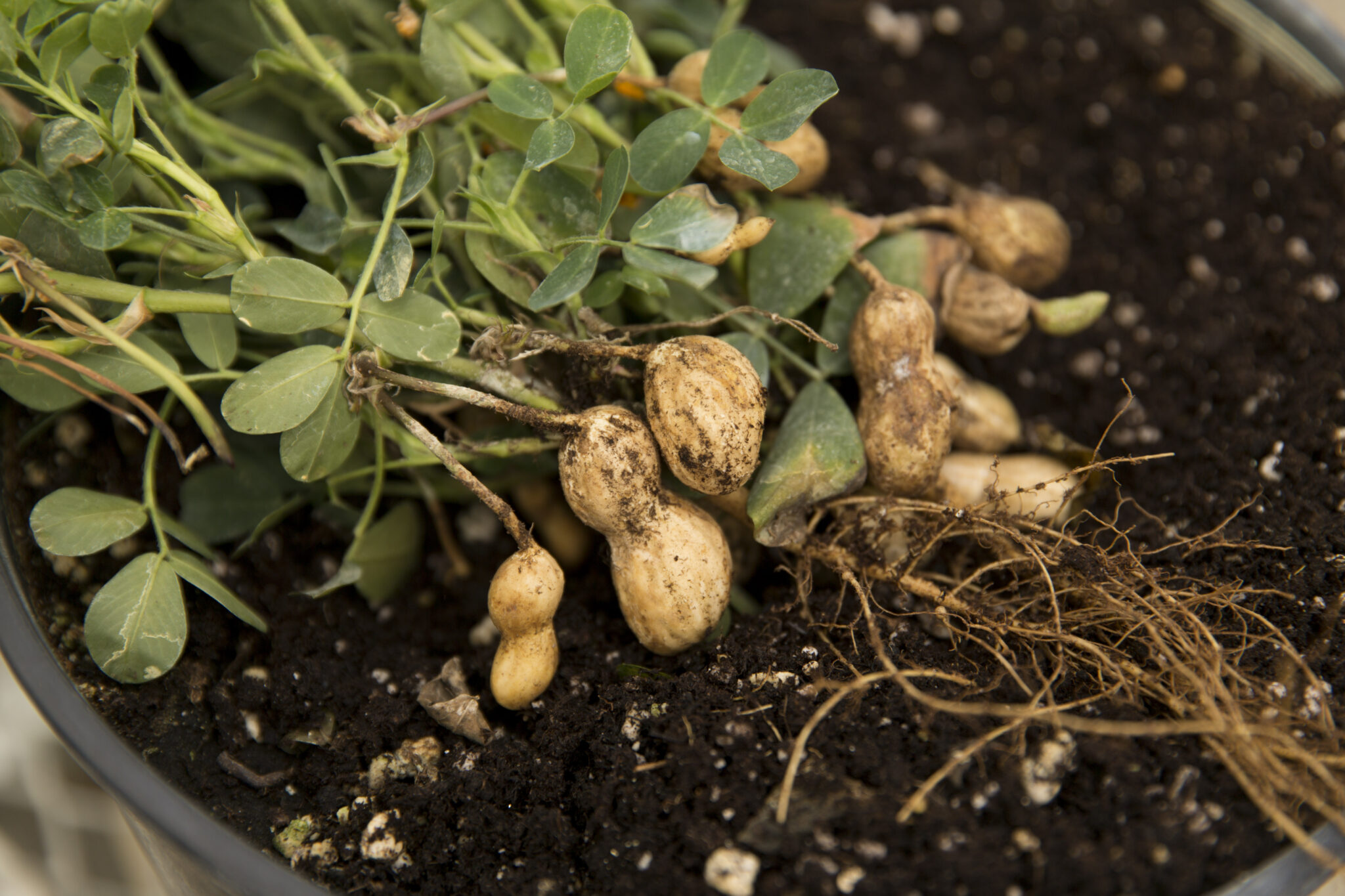With each new season, Georgia farmers are increasing their acreage of triploid watermelons. Every year, more and more show up in grocery stores and other retail outlets.
D. Granberry, UGA
CAES |
A welcome change
Triploid, or "seedless," watermelon production didn't start catching on in the United States until the mid-'80s when Georgia farmers began growing them.
Now, the popularity of triploid melons is rising fast. Rightly so! Since triploid melons don't have those pesky seeds to worry with, you can concentrate 100 percent on enjoying the sweet taste of watermelon.
As a group, triploid melons are also among the sweetest, most flavorful melons. If you haven't eaten a "seedless" watermelon, try one. Odds are that you will really like it.
Growing your own
The first thought that will likely come to your mind is "Oh, boy, this is good." If you're a gardener, the next thought will surely be, "Can I grow these in my garden?"
You probably can.
Although growing triploid melons is much like growing normal watermelons, triploid melons are a little more persnickety.
'Seedless' Melons?
Why are some watermelons seedless? Normal watermelons have the two sets of chromosomes, or genetic information, required to create seeds for reproduction. Seedless melons, though, have three sets of chromosomes, which makes them sterile. So they don't normally produce pollen or seeds.
At first, watermelons without seeds were called seedless. After all, this is the one trait that most clearly distinguishes them from normal watermelons.
But as more seedless melons were grown, people began to see that the term "seedless" wasn't perfectly accurate. Because triploid (three- chromosome) varieties are virtually sterile, they don't normally produce true seeds. However, they do produce some immature, "edible" seed coats. And occasionally, though rarely, they can produce a true seed.
Even though a seedless variety may be 99.9 percent seedless, the occasional true seed that sometimes develops in a seedless watermelon is indeed a seed.
Seeding Not Recommended
Eventually, the term "seedless" caused misunderstandings among growers, seed companies and shoppers. So in time, the seed industry stopped using "seedless" and used the more precise term "triploid" to designate the essentially seedless triploid watermelon varieties.
In the garden, the germination of triploid watermelon seed is iffy below 80 degrees. The seed coats of triploid melons are thicker, too, than the coats of normal watermelon seeds.
These thicker seed coats tend to stick to the cotyledons as plants emerge and damage the plants or delay emergence. So it's hard to get a stand of triploid melons from seed.
Since triploid seeds are expensive (30 to 50 cents each), overseeding and thinning isn't a feasible alternative. Simply put, it's best to buy or grow triploid watermelon transplants for your garden.
Pollenizer Variety
In regular watermelons, fruit enlargement depends on the developing seed. Since triploid melons don't have developing seed, they must be pollinated to stimulate fruit growth. But triploid plants are essentially sterile and produce little, if any, pollen.
To solve the problem, you have to interplant normal watermelons within rows of triploid melons. In each row, transplant a normal diploid plant, followed by two triploid plants, then a diploid plant and so on down the row.
Make sure the melons of the diploid variety you plant as a pollenizer are easy to tell from the triploid. The watermelons on the diploid variety will have seeds.
By taking a little more time and using a few precautions, you, too, can grow "seedless" melons in your garden. They are well worth the effort. And for your annual seed-spitting contest, the pollenizer variety will provide plenty of seed.







